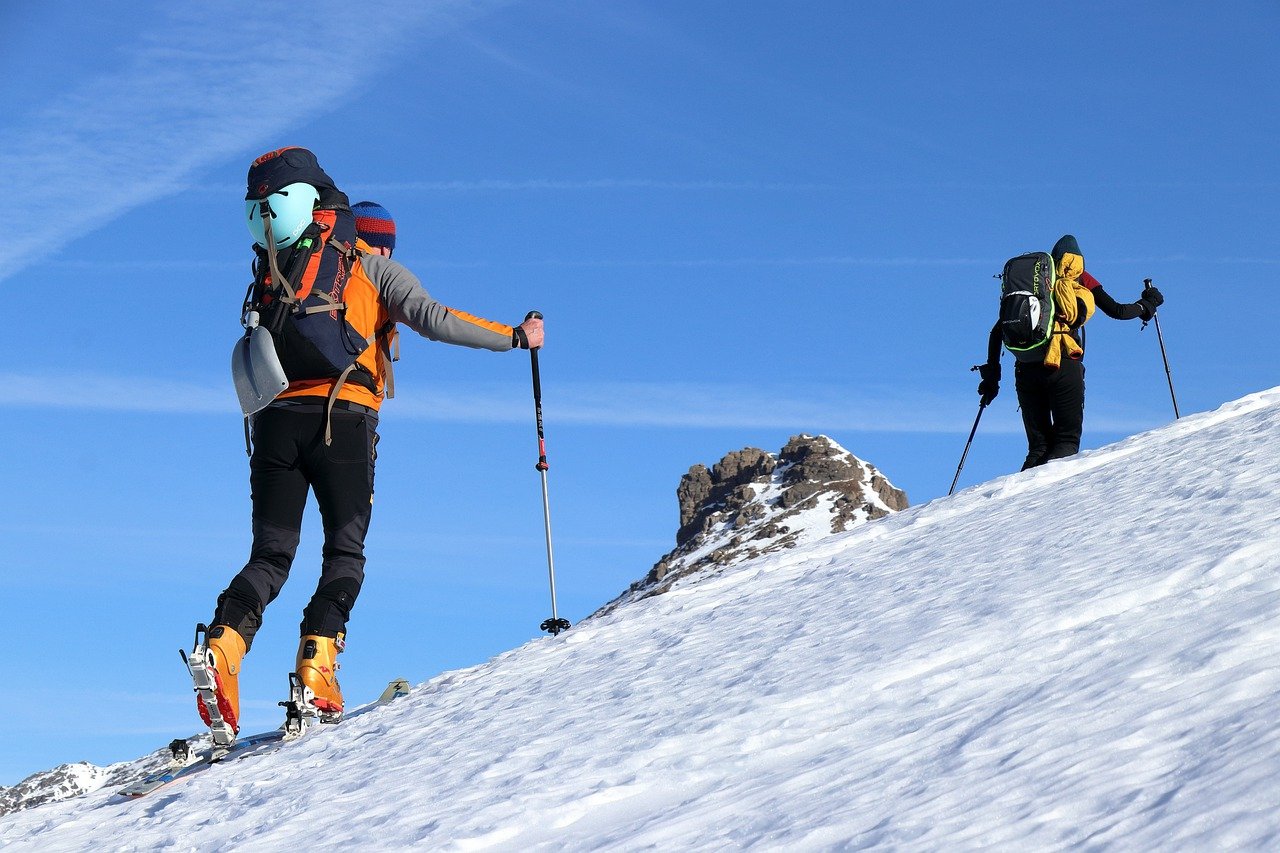The intricately linked dynamics between the ski season and real estate markets reveal a symbiotic relationship that significantly influences property values, buyer interest, and seller strategies in areas proximate to ski resorts, particularly in Colorado.
The seasonal cycles inherent to the region’s popular ski destinations create unique opportunities and challenges for both buyers and sellers, underscoring the importance of timing when it comes to Colorado ski resorts.
This relationship highlights the critical role timing plays in successfully navigating the Colorado real estate market, especially in ski resort communities, where the interplay between the high season and the offseason can dramatically impact decisions and outcomes.
Understanding the Ski Season in Colorado
Overview of the Typical Ski Season Duration
The Colorado ski season opening and closing dates may vary, but it typically begins in early November and can extend through late April, with some resorts even pushing operations into May depending on snow conditions.
This duration allows for a broad window of opportunity for enthusiasts to hit the slopes, catering to both early birds and those who prefer the warmer spring skiing conditions.
Impact of Weather Variations on Ski Season Length
Weather variations play a critical role in determining the length of the ski season each year. A heavier snowfall can lead to an earlier start and a later finish, while a warmer winter might shorten the season significantly.
Resorts have combated these variations with snowmaking technology, but the natural snowfall still largely dictates the overall quality and length of the season.
Popular Ski Resorts and Their Closing Dates
Colorado is home to numerous renowned ski resorts, each with its own allure. For instance, Vail typically ends its season in mid-April, offering visitors a long window to enjoy its vast terrain.
Aspen Mountain similarly aims for a mid-April closing, weather permitting. On the other hand, Arapahoe Basin often extends its season into June, thanks to its higher elevation and colder temperatures, making it a favorite among spring skiers.
These closing dates are contingent upon weather conditions, with resorts extending or shortening their seasons based on snowfall and temperatures.
Some people choose a Colorado ski resort based on its proximity to certain places, such as Copper Mountain, Beaver Creek, Granby Ranch, or more, whereas others want to make sure that they have the activities they’re looking for, like ice skating.
Regardless of what you want, the ski season in Colorado ends in April, giving you plenty of time since mid-October or so to plan out what you want.
Influence of Ski Season on Property Demand
Surge in Property Interest During Ski Season
The arrival of ski season heralds a significant surge in property interest in areas proximate to ski resorts. This period is marked by an increased number of inquiries and transactions, as both enthusiasts and investors look to secure properties that offer easy access to ski slopes.
The demand is not limited to direct access but also extends to properties that are within a reasonable distance from these resorts, as they serve as convenient bases for seasonal activities.
Factors that Attract Potential Buyers During this Period
Several factors contribute to the elevated interest in properties during the ski season. The allure of scenic landscapes blanketed in snow, coupled with the lifestyle and exclusive amenities offered by ski resorts, plays a pivotal role.
Properties that promise a blend of luxury and proximity to skiing facilities are particularly sought after, as they cater to buyers looking for holiday homes or investment opportunities with potential for rental income.
Vail resorts, for example, and any places with open trails are usually very popular. So are the ones where you can snowboard and the ones that remain open as long as possible.
Additionally, the community and lifestyle associated with ski areas—characterized by activities like skiing, snowboarding, and après-ski gatherings—add to the appeal, attracting prospective buyers seeking a vibrant social scene or a family-friendly environment.
The Psychological Impact of Winter Sports on Property Decisions
The psychological impact of winter sports on property decisions cannot be understated. Engaging in these activities often evokes feelings of exhilaration and freedom, which in turn, positively influences individuals’ perceptions and decisions about purchasing property in these areas.
Prospective buyers may associate the properties with the joy and relaxation experienced during ski vacations, making the idea of owning a home in such locations more enticing.
This emotional connection, combined with the tangible benefits of having a retreat in a winter wonderland, significantly sways property decisions in favor of ski resort areas during the season.
Ski Season Trends in Colorado Real Estate
Surge in property interest during ski season
The arrival of ski season heralds a significant surge in property interest in areas proximate to ski resorts. This period is marked by an increased number of inquiries and transactions, as both enthusiasts and investors look to secure properties that offer easy access to ski slopes.
The demand is not limited to direct access but also extends to properties that are within a reasonable distance from these resorts, as they serve as convenient bases for seasonal activities.
Factors that attract potential buyers during this period
Several factors contribute to the elevated interest in properties during the ski season. The allure of scenic landscapes blanketed in snow, coupled with the lifestyle and exclusive amenities offered by ski resorts, plays a pivotal role.
Properties that promise a blend of luxury and proximity to skiing facilities are particularly sought after, as they cater to buyers looking for holiday homes or investment opportunities with potential for rental income.
Additionally, the community and lifestyle associated with ski areas—characterized by activities like skiing, snowboarding, and après-ski gatherings—add to the appeal, attracting prospective buyers seeking a vibrant social scene or a family-friendly environment.
The Psychological Impact of Winter Sports on Property Decisions
The psychological impact of winter sports on property decisions cannot be understated. Engaging in these activities often evokes feelings of exhilaration and freedom, which in turn, positively influences individuals’ perceptions and decisions about purchasing property in these areas.
Prospective buyers may associate the properties with the joy and relaxation experienced during ski vacations, making the idea of owning a home in such locations more enticing.
This emotional connection, combined with the tangible benefits of having a retreat in a winter wonderland, significantly sways property decisions in favor of ski resort areas during the season.
Pricing Strategies at the End of Ski Season
Impact of Ski Season Conclusion on Property Prices
The conclusion of the ski season often results in a noticeable fluctuation in property prices in ski resort areas. During the peak season, properties in these areas command higher prices due to increased demand from tourists and enthusiasts seeking convenient access to ski facilities.
However, as the season winds down, this demand diminishes, leading to a potential decrease in property prices. This period can offer a strategic advantage for buyers, as sellers might be more inclined to negotiate to avoid holding onto the property during the off-season when demand is significantly lower.
Strategies for Sellers to Capitalize on the End of Ski Season
To capitalize on the end of the ski season, sellers can employ several strategies. Firstly, highlighting the year-round appeal of the property can attract buyers interested in the location beyond just the skiing aspect, such as those looking for summer hiking or mountain biking.
Additionally, offering incentives, such as including furnishings or offering to cover closing costs, can make properties more attractive.
Sellers can also target investors by emphasizing the potential for rental income during the next ski season, thereby turning the seasonal nature of the market into an advantage.
Bargaining Power of Buyers in the Post-Ski Season Period
Buyers often find themselves with increased bargaining power during the post-ski season period. With the decrease in tourist traffic and the shift towards the off-season, sellers may be more motivated to sell, particularly if they wish to avoid the costs associated with maintaining a property during the low-demand months.
This scenario provides buyers with a leverage point for negotiating lower prices. Furthermore, buyers can take advantage of the wider selection of properties on the market, giving them the opportunity to find the best fit for their needs at a more competitive price.
Challenges and Opportunities for Buyers
For buyers interested in the real estate market of ski resort communities, the end of the ski season presents both challenges and opportunities.
Negotiating deals at the end of ski season can be a prime opportunity for buyers. Sellers might be more willing to negotiate as demand decreases with the end of the ski season, potentially leading to more favorable terms or lower prices for the buyer.
On the other hand, assessing property value after ski season concludes requires careful consideration. Buyers must evaluate whether the property’s value holds beyond the ski season, considering factors such as the potential for rental income year-round and the property’s appeal during the off-season.
Lastly, exploring potential discounts and incentives is another avenue for buyers at the end of the ski season. Sellers or developers often offer incentives to attract buyers during this slower period.
These can range from reduced prices, and lower closing costs, to other perks that can provide significant savings and advantages to the proactive buyer.
Buyer’s Checklist for Post-Ski Season
Factors to Consider When Purchasing Real Estate After Ski Season
When considering the purchase of real estate following the ski season, buyers should prioritize location, potential for seasonal use, and local market trends.
Properties situated near ski resorts can offer year-round appeal, not just for winter sports but also for summer activities like hiking and mountain biking, which can enhance rental income potential.
Understanding the shifts in demand and pricing patterns post-ski season is crucial, as this period may offer more competitive pricing and less buyer competition.
Evaluating Property Conditions After Winter Weather
Post-ski-season, it’s vital to assess the wear and tear winter weather may have inflicted on properties. Buyers should conduct thorough inspections to check for issues such as structural damages caused by heavy snowfall, water damage from ice dams, and the integrity of heating systems that have been heavily used throughout the winter.
This step ensures that the investment is sound and that the property will not require unforeseen repairs or maintenance.
Navigating the Post-Ski Season Market as a First-Time Buyer
For first-time buyers, navigating the post-ski season market can seem daunting without the right approach.
Engaging a real estate agent who specializes in properties in ski areas can provide invaluable insight into the unique aspects of these markets.
Additionally, understanding financing options and being prepared for potentially quicker closing times due to less buyer competition can position first-time buyers advantageously in securing their ideal property as the ski season concludes.
Summary of Ski Season’s End in Colorado Real Estate
The end of the ski season in Colorado presents a fascinating shift in the real estate market dynamics within ski resort areas.
Our exploration has revealed that property prices tend to fluctuate with the conclusion of the ski season, generally favoring buyers due to decreased demand.
This period offers strategic advantages for those looking to purchase, as sellers are more inclined to negotiate to avoid the off-season’s lower demand levels.
Additionally, the potential for year-round appeal and rental income highlights the unique investment opportunities these properties offer beyond the peak ski season.
Furthermore, the challenges and opportunities that arise in the post-ski season market provide a rich ground for negotiation and investment strategies.
Buyers equipped with knowledge about seasonal market trends, property evaluations post-winter, and the right purchasing strategies can find valuable deals. The importance of understanding the market’s nuances and engaging expert guidance cannot be overstated, especially for first-time buyers venturing into these seasonal real estate landscapes.
In conclusion, the intersection of ski season dynamics and real estate in Colorado’s resort areas is marked by unique patterns of demand, pricing fluctuations, and investment potential.










